By the end of the 19th century the concept of the tug/drag/tractor style of motive power was gaining popularity, both here and in Europe, as the mechanical devices gained in reliability and shrank in size. Addressing the reliability factor, a tractor style vehicle pulling a converted carriage won what was thought at the time to be the world's very first automobile race in July of 1894, but that's a whole separate essay. For now, see this earlier post.
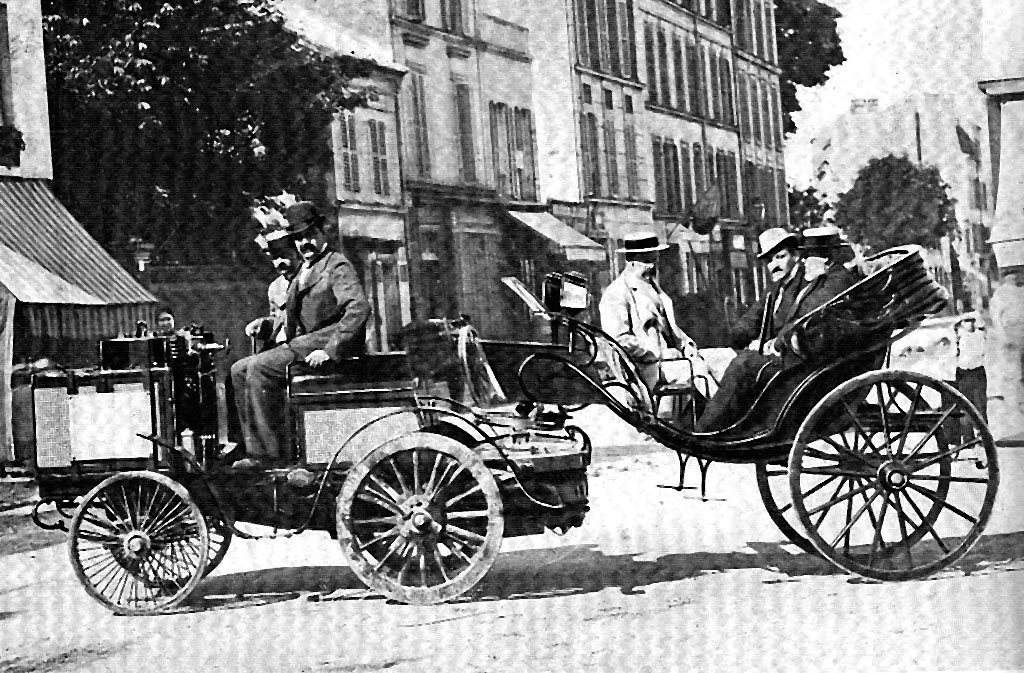
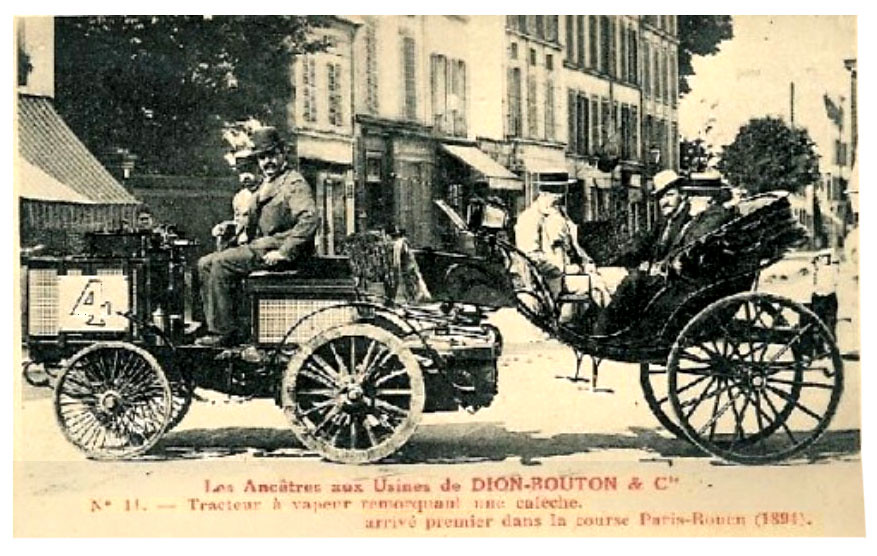
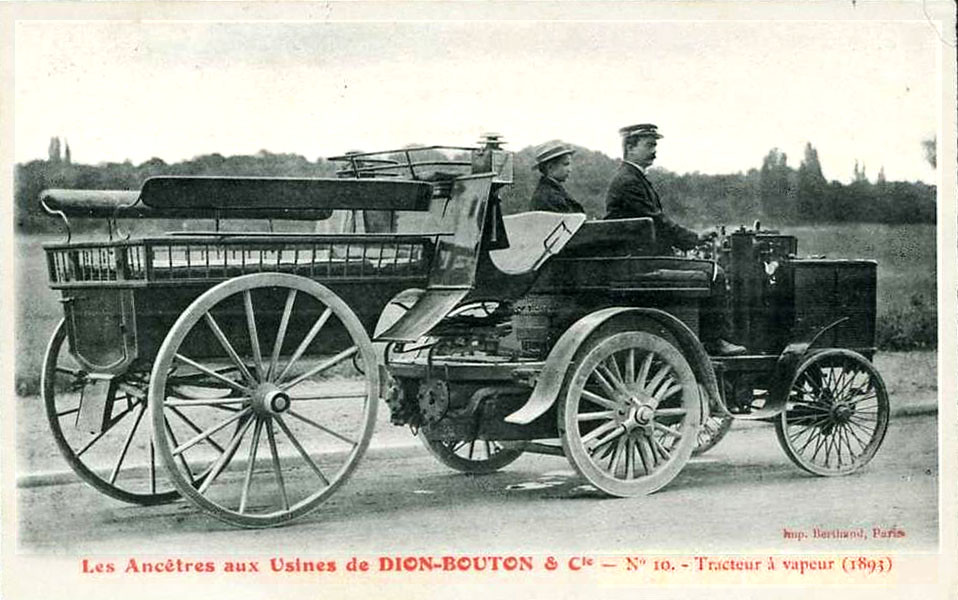

Comte (Count) Jules Félix Philippe Albert de Dion (he didn't become Marquis until his father Albert died April 26, 1901) was an enthusiast for all things mechanical, and as a member of a prominent French noble family, he had money to invest. Engineers Georges Bouton and Charles-Armand Trépardoux (Bouton's brother-in-law) built model steam engines and other scientific toys in their shop in Léon, where Trépardoux harbored a long-time dream of building a steam car. In 1882 Bouton and Trépardoux built a rudimentary steam vehicle (below).
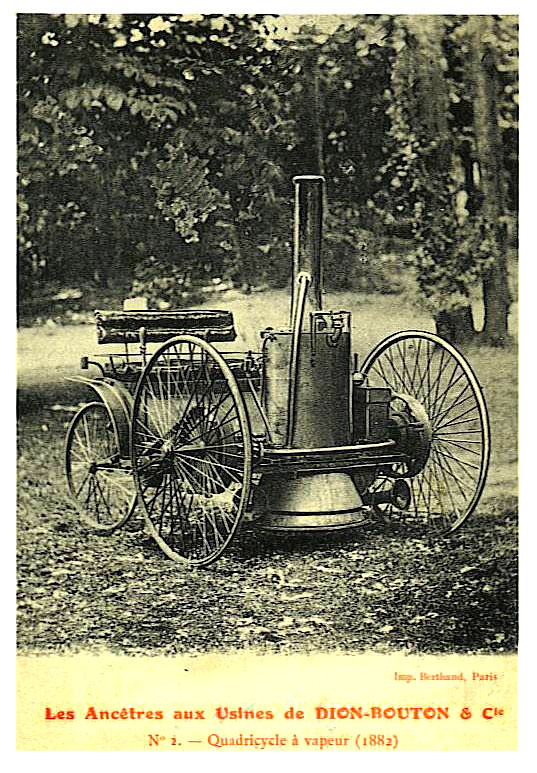
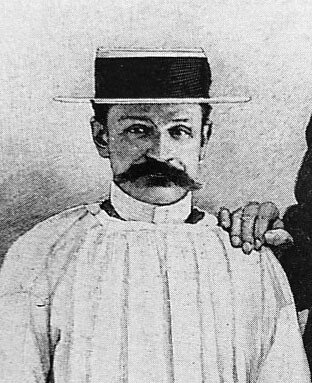
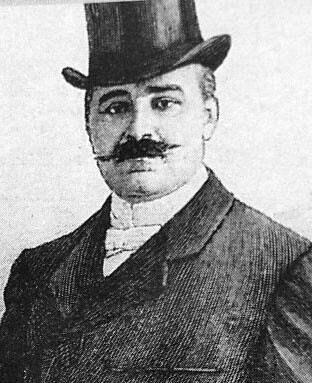

That first year of 1883 they produced a steam car that had a boiler and engine mounted up front, which drove the front wheels via belts (below). The rear wheels were steerable. It reportedly burned to the ground during testing.
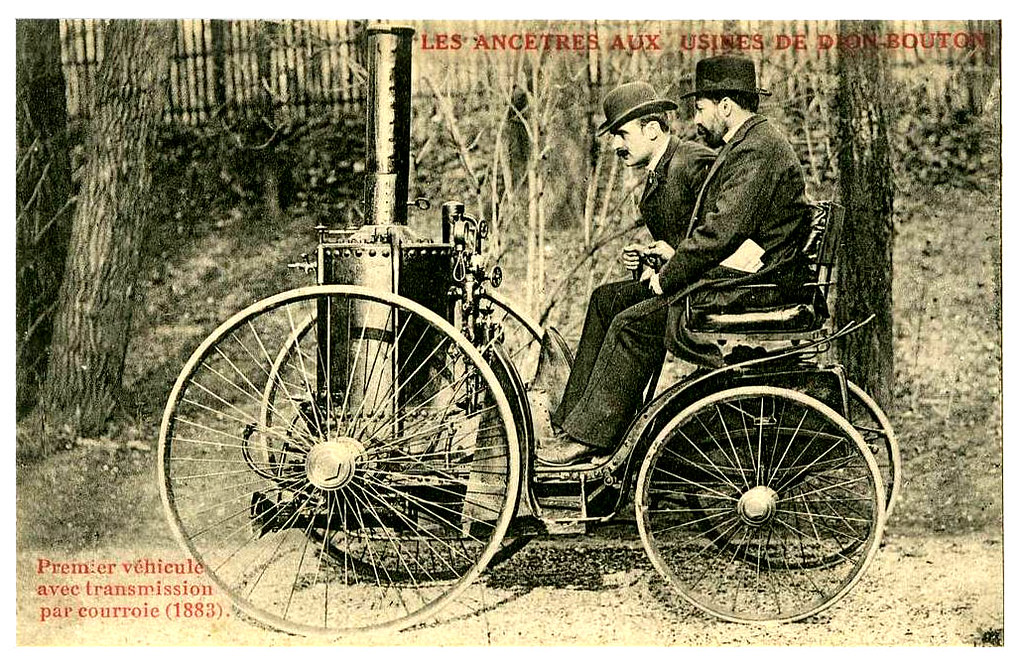
The next year they built a second, more refined vehicle dubbed La Marquise after de Dion's mother, that had more conventional steering and rear wheel drive, with seating capacity for four. This was the first of their famous De Dion, Bouton et Trépardoux Dos-A-Dos Steam Runabouts, the vehicle that 'won' the 1887 non-race with Georges Bouton driving (again, see earlier post). Dos-A-Dos means back-to-back seating arrangement. That very vehicle, La Marquise, now 127 year-old, still runs - making it the oldest running car in the world - and recently sold for 4.62 million dollars. Story here.
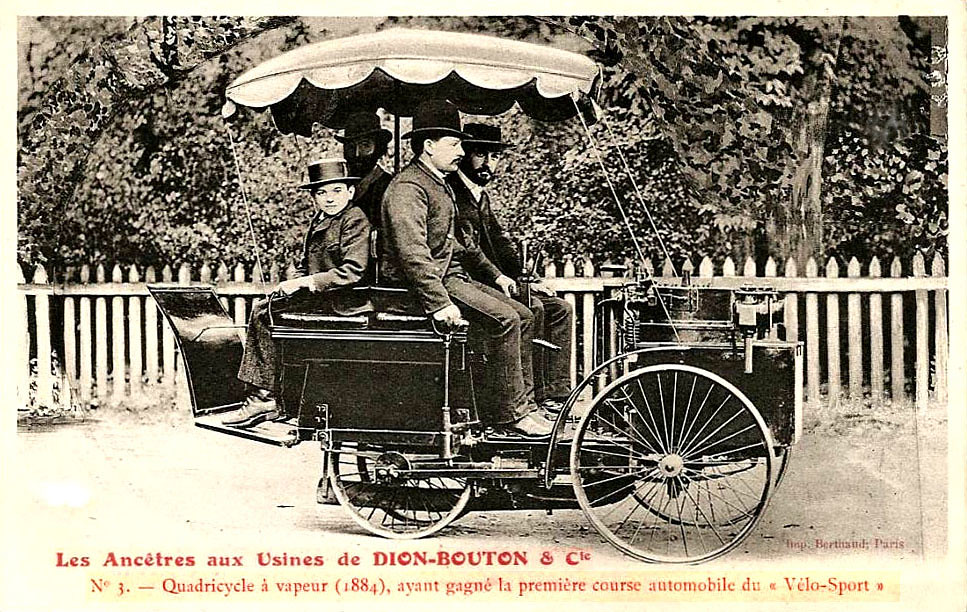
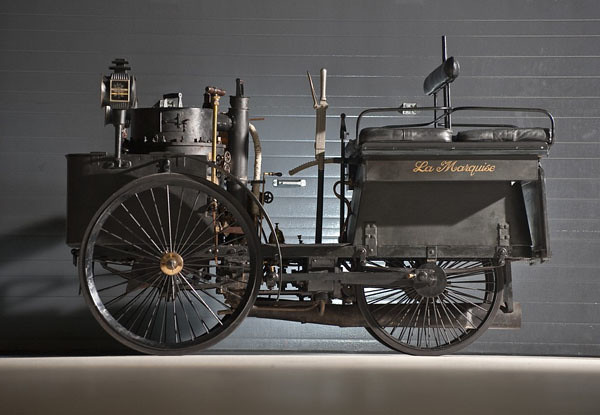
Within a few years the De Dion-Bouton catalog offered built-to-order buses, dog-carts, steam phaetons, carriages and even a steam tricycle with a two-cylinder engine.
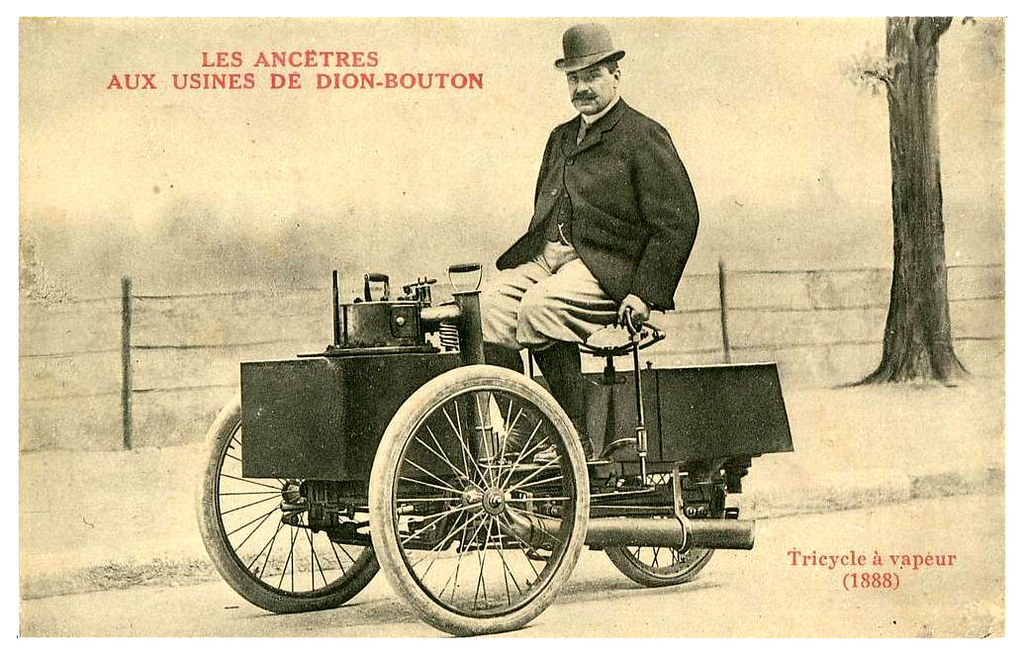
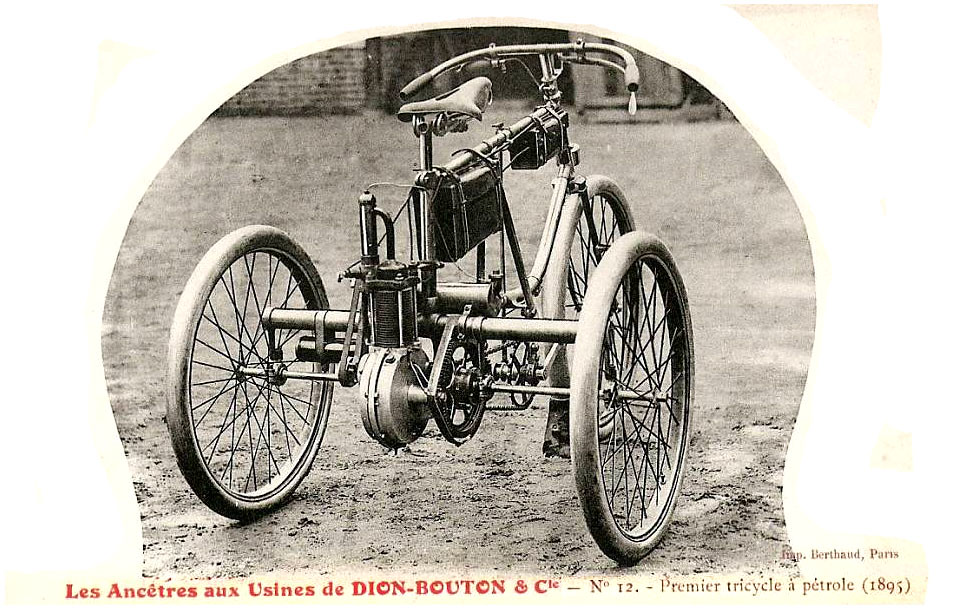
The catalog soon included the subject of this post - the larger trailer-pulling tractor. Placing first in that 1894 race (and yet not winning), the De Dion-Bouton Road Motor - or Steam Bogie, as the company called them - was the direct descendant of the successful De Dion, Bouton et Trepardoux Dos-A-Dos Steam Runabout of 1884.
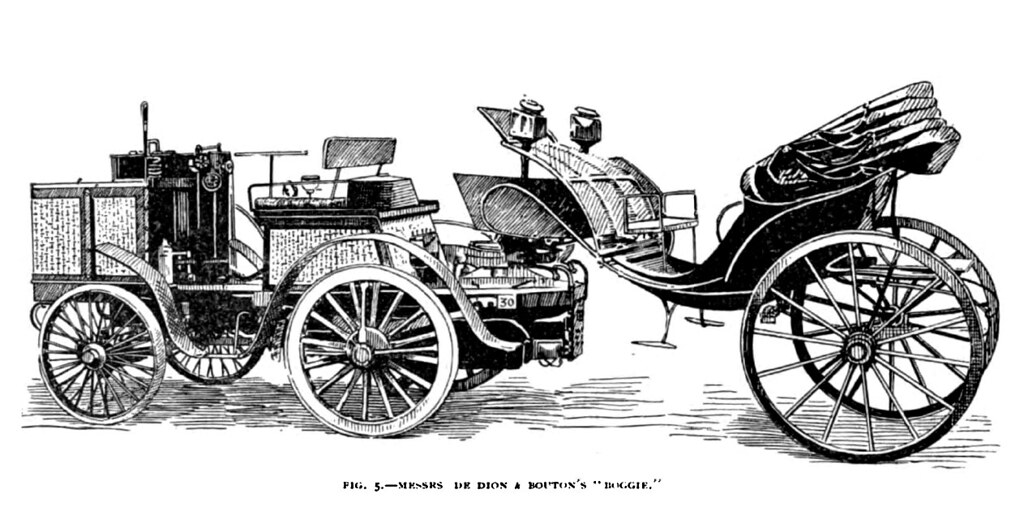
Writing from Weimar, Germany on November 14, 1895, Commercial Agent (a position, abolished in 1906, that was just below a Deputy Consul) Thos. Ewing Moore included in his monthly Consular Report to the U.S. State Department a section titled Horseless Carriages in Europe. In describing the De Dion-Bouton Steam Bogie he noted:
The "Boggie," or steam tug (fig.5), [above] may be attached to any carriage or omnibus and then run at a speed of 25 miles per hour. Its motive power is a two-cylinder, triple-expansion engine producing 20 to 30 horsepower. The engine is fed by one of De Dion & Bouton's patent boilers. One handle only is used to start and back the machine. Coke is the fuel used, a quantity sufficient for a journey of 80 miles being carried in the front part of the machine. The water tank is in the rear, under the conductor's seat; enough can be carried for a journey of 35 miles. It gets steam up very quickly, only fifteen minutes being necessary. The cost of running is about 2 cents per mile. The cost of the "Boggie" varies from 13,000 to 14,000 francs ($2,500 to $2,700), according to the weight designed to carry.The De Dion-Bouton Steam Bogie would go on to be described in detail and to garner accolades in the motoring, scientific, and engineering journals of the world's major automotive innovators: the United States; France; the United Kingdom; and Germany. Long after it went out of production, the Steam Bogie was still being featured in books on automotive development and engineering.
Next: The De Dion-Bouton Steam Bogie part 2
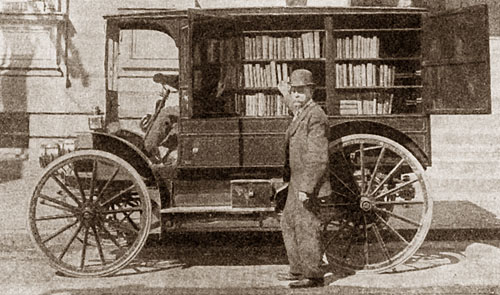
No comments:
Post a Comment